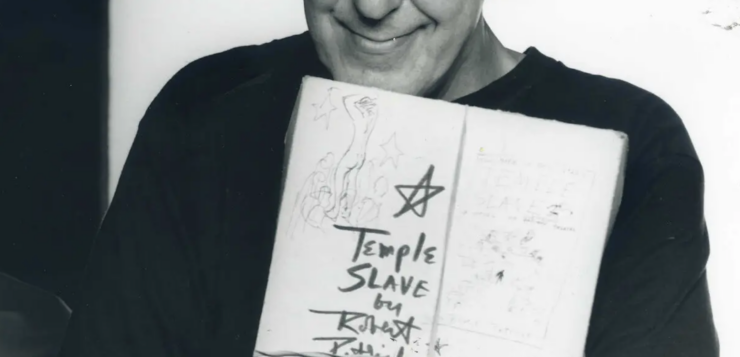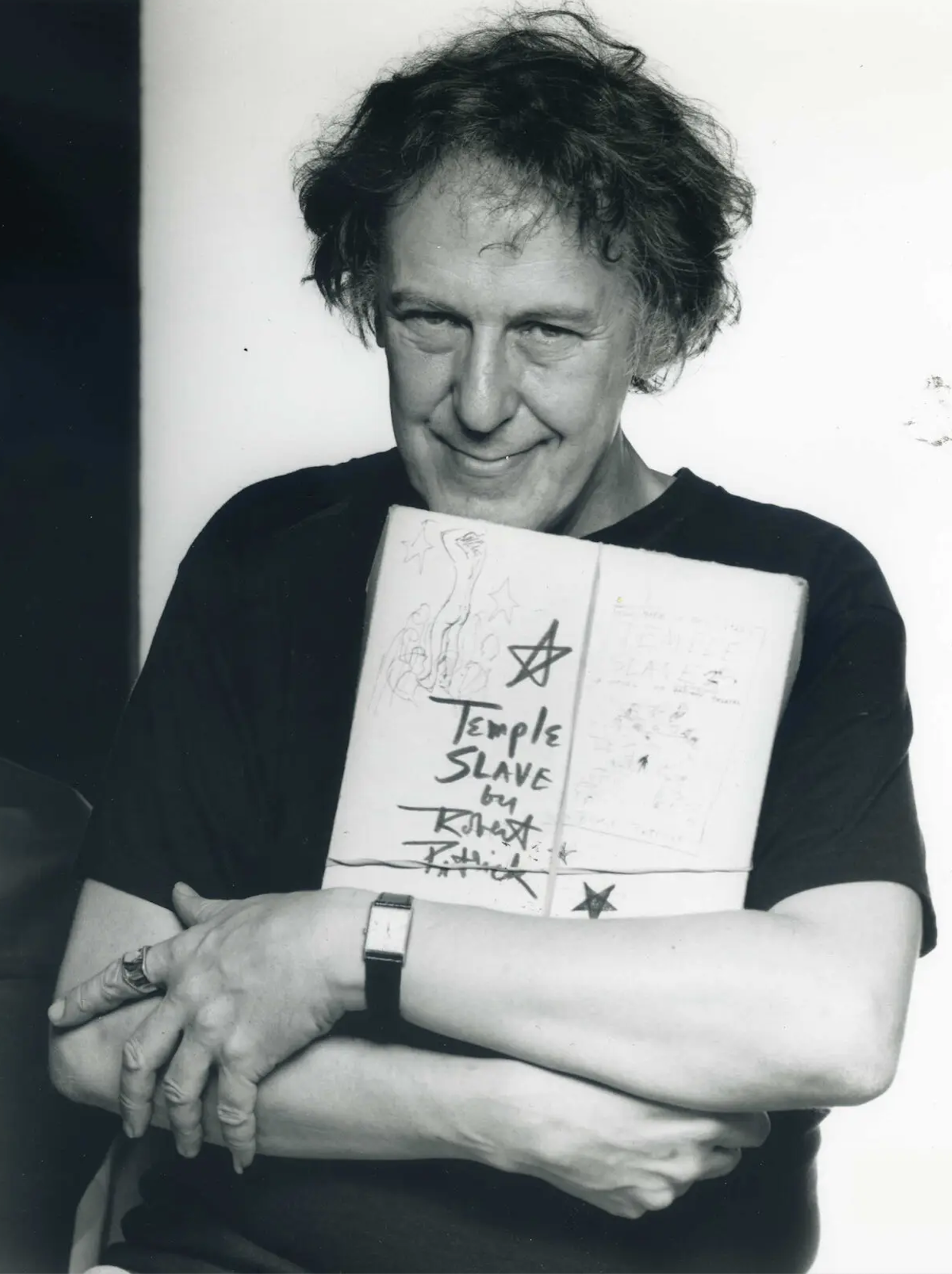LEGENDARY PLAYWRIGHT Robert Patrick died earlier this year, on April 23rd, at the age of 85. The author of some sixty surviving plays—in 1983 he estimated that he’d already written between 250 and 300—he was described by Samuel French (the publisher of acting editions and licenser of productions of contemporary plays) as the most produced playwright in New York. But the irreverent Patrick preferred to describe himself variously as “true trash,” a “dark angel of light,” and a humble “handmaid of the arts” who was dedicated to “saving American theater.” His intention, he wrote, was to “set fire to the minds of a generation.”
Robert Patrick O’Connor—a mistake made on the poster for his first play resulted in his dropping his family name in professional matters—was born in Kilgore, Texas, on September 27, 1937. Eager to escape what he termed the “pod people of fifties America” among whom he grew up, he joined the Air Force to see the world, only to be discharged during basic training when a poem he’d written to a fellow soldier was uncovered during a crackdown on gays in the armed services. In September 1961, traveling cross-country by bus, he stopped to visit a friend who’d recently moved to Manhattan. On a street during his first day in the city, he followed a beautiful young man into a dilapidated coffee house cum theater. He was so immediately engaged by the Caffe Cino’s atmosphere of raw magic and open homosexuality that he remained there until it was forced to close following founder Joe Cino’s death in 1967.
As Patrick himself recalled later in life, the Caffe Cino was the “Ground Zero of the 1960s … a coffee-house, a theatre, a brothel, a temple, a flophouse, a dope-ring, a launching-pad, an insane asylum, a safe-house, and a sleeper cell for an unnamed revolution.” His novel was Temple Slave (1994), a fictionalized but nonetheless revealing history of the Caffe Cino, the birthplace of American gay theater. (See also Darren Patrick Blaney’s article in the January-February 2014 issue of this magazine.) The secret of the Caffe Cino’s success seems to have been Joe Cino’s rejection of the scripted and the expected. Cino refused to read the plays submitted to him for production so as to avoid creating his own expectations that might interfere with the playwright’s concept, or prevent him from enjoying the surprises that the production had to offer. (“It’s magic time,” he’d announce at the start of every performance.) And because the Caffe was so small and had no real stage to speak of, actors would move among the audience members, who were tightly packed around the coffeehouse tables, thereby blurring the boundary between the audience and the performers and creating what was often an electric connection. Also, as Stephen Bottoms, historian of the off-off-Broadway theater movement, points out, because the better part of the Caffe Cino’s staff and regular patrons were gay, the Cino became a haven for individuals excluded from mainstream society, fostering “the celebratory abandon with which Cino writers embraced the bizarre, the ridiculous and the taboo.”
Raymond-Jean Frontain’s most recent book is Conversations with Terrence McNally.








